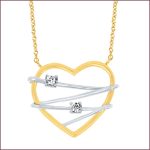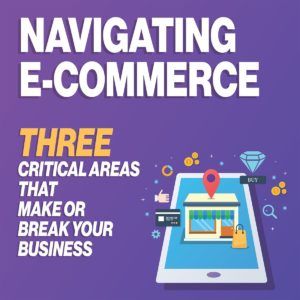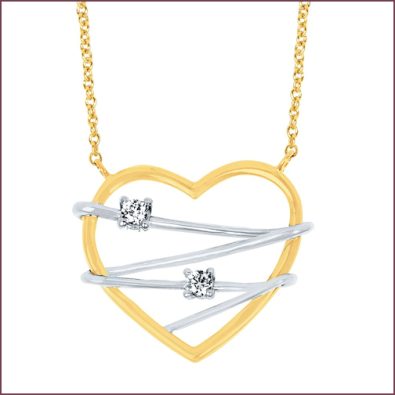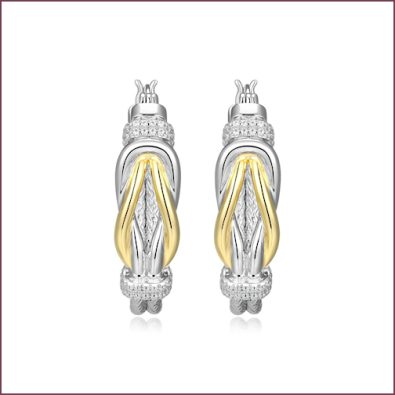Driving Traffic to Your Website

Businesses used to drive people from their website to social media to amass likes. But we found out that likes don’t equal sales, and that the process is actually the complete opposite.
Once you have the customer on your website, you want to hold on to them, and only give them one exit besides your social media links and you do not want the way out to be prominent. Keep people on your web site. Give them ways to include adds in their cart. Get that sale.
Social media platforms provide channels for jewelers to connect with their customers, existing and new, on a more intimate level, and build relationships.
 This was the message Sean McCormick, director of social media and Sarah Siegel, photographer, for Novell Enterprises, a division of Continental, underscore in a recent Plumb Club podcast dishing on different technologies and tools off and online to drive traffic.
This was the message Sean McCormick, director of social media and Sarah Siegel, photographer, for Novell Enterprises, a division of Continental, underscore in a recent Plumb Club podcast dishing on different technologies and tools off and online to drive traffic.
“You can maximize the relationship you have with current customers and new, by understanding how social media is used in today’s marketplace,” McCormick shares. “We use Twitter as the announcement to the party or for breaking news.
Facebook is the party. You can act on a more intimate level while developing your relationship like you would in your store.”
McCormick recommends that the person monitoring your social sites does not use the brand as a way of communicating, but instead a personal profile as the administrator with a picture. “This provides a real human connection like they would have in store.”
Social Media Driver
Instagram, SnapChat and Pinterest are where the majority of people willing to shop on social media go to shop. These platforms are the most powerful tools to sell jewelry online to new customers, McCormick cites. He notes that YouTube will not generate revenue, but would be entertainment for customers, an excellent way to communicate what separates you from the store down the road.
“Audience engagement via video varies from platform to platform,” McCormick says. “If you share a 3-minute video on Facebook you may get 10% of your followers to view under 1 minute of that clip. But put that same video on YouTube and you can expect the viewer to watch the full clip.”
People have become conditioned on social media feeds for that immediate gratification of what’s next, and each platform has their own personality. “Twitter and Facebook crave what is next so the user can be the first to know about it, share it and forget about it,” McCormick describes. “On YouTube, you capture more of the attention span of your customers, yielding a higher ROI.”
With social media you have the opportunity to direct web traffic to a number of different places, says Anthony Marotta, vice president of marketing for Prime Art Jewelry (PAJ) in a Plumb Club podcast discussing ecommerce strategies with PAJ President, Dillion Chen. He advocates Instagram, Facebook and Pinterest as effective channels to drive traffic to your website.
Marotta recommends creating a promotional calendar for the year to be coordinated across all customer touchpoints. Make sure content posted on social media is authentic, relevant to the brand, local, and compatible with information on site.
 Carolina Almanzar, a senior sales representative with iStar Group, in a Plumb Club podcast with Karl Schmid, company vice president, suggests laying out a whole week of posting a head of time to see how it looks together. “They should all tell the same story,” she shares. “Research hashtags to make it easier to find things. Look at hashtags for other brands that you like. Tag your product.” She recommends trying live content and paid promotions on Instagram. “With a small budget you can increase your audience by 20%.”
Carolina Almanzar, a senior sales representative with iStar Group, in a Plumb Club podcast with Karl Schmid, company vice president, suggests laying out a whole week of posting a head of time to see how it looks together. “They should all tell the same story,” she shares. “Research hashtags to make it easier to find things. Look at hashtags for other brands that you like. Tag your product.” She recommends trying live content and paid promotions on Instagram. “With a small budget you can increase your audience by 20%.”
Schmid notes that there are 1 billion users of Instagram, with 70% using it to interact with favorite brands. Over half (53%) said they would follow a brand if they liked their Instagram content, and 54% bought something after seeing it on Instagram.
Siegel notes that hosting plugins or widgets on your website could pull customers away from your website. “You don’t want your customers getting distracted and leaving until they buy your jewelry. Pinterest or Instagram are the only ones I know of that are set up in an effective way to sell merchandise by allowing you to redirect the sale back to your site.”
“Understand where you are driving traffic,” Marotta says. “Transaction fees may be different on your B2C website versus Facebook Marketplace, so see what makes sense for your business.”
Calls to Action
Integrating shopping calls to action in social media posts and ads help to engage potential customers. Optimize your digital ad spend for online sales instead of encouraging in-store traffic, advises jewelry industry consultant Cheryl Kremkow in a Plumb Club podcast sponsored by the wedding band brand Benchmark.
Kremkow says the marketing you do for your brick-and-mortar store is a good place to regularly promote your website. Include your website address on all your ads, emails and marketing materials to remind people you have an online store.
 It’s also important to attract shoppers who know what they want, but not yet where to get it, which means creating landing pages designed to attract shoppers in your area searching for specific products, says Kremkow. “Target specific keyword phrases with relevant content and product. Link to these pages from Google search ads.”
It’s also important to attract shoppers who know what they want, but not yet where to get it, which means creating landing pages designed to attract shoppers in your area searching for specific products, says Kremkow. “Target specific keyword phrases with relevant content and product. Link to these pages from Google search ads.”
“Like salespeople who show you the eternity bands you’re interested in instead of you making you look around for them yourself,” describes Kremkow of landing pages. “Over time these landing pages will also attract organic traffic. This saves you marketing dollars.”
Email Most Profitable
Email marketing is probably considered to be the most profitable aspect of an ecommerce strategy, Chen says. The hard work is in acquiring the emails — which might occur when a visitor first enters the website; makes a purchase online, signs up for promotions, offers and newsletters on social media; and in-store for sales and service information.
“Why is email marketing so great,” Chen says, is because it is “a way to put an offer in front of your customers basically for free.”
While you shouldn’t bombard your customers with emails, you should come before them with some sort of value proposition. Jewelers should be getting news that excites them — like a discount, free gift, local social event, coveted product launch, items that are exclusive or limited edition, Chen suggests. There are email programs out there that can help you manage your email list.
Optimize Assets
Marotta says that each business must assess if these tasks can/should be done in house or outsourced, or a combination.
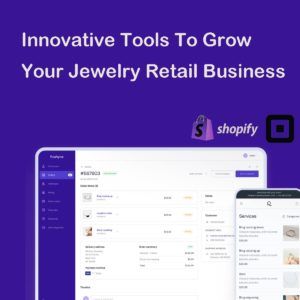 Optimize your owned assets and align your customer in-store experience with that online, presenting a consistent message across your communication channels, says Chris Awad, head of marketing for MJJ Brilliant in a Plumb Club podcast with Jason Yakubovich, director of operations. Yakubovich notes that consumers are used to searching for products online, so products and pricing must align with what you have in store.
Optimize your owned assets and align your customer in-store experience with that online, presenting a consistent message across your communication channels, says Chris Awad, head of marketing for MJJ Brilliant in a Plumb Club podcast with Jason Yakubovich, director of operations. Yakubovich notes that consumers are used to searching for products online, so products and pricing must align with what you have in store.
Do not spend a lot of time individualizing or pre-judging your intended audience, advises McCormick. “Cast a wide net so as many consumers as possible can find you. It may sound counter intuitive, but do you really care who decides if they want to be your next customer? Give everybody a chance to see what you do. Eventually, algorithms will steer products to customers through cookies and sales tracking.
Advertise about your jewelry and not to a specific audience. Good website merchandise will drive those products to the correct consumers for you.”

